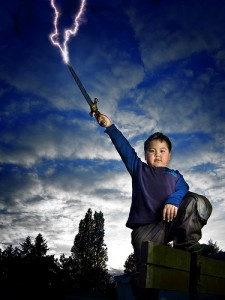 These three weeks before the official holiday break are particularly stressful. It’s a perfect storm of cold weather, 4 p.m. sunsets (and 7:30 a.m. sunrises), school and work deadlines, end of year concerts, holiday parties, gift buying, list-making and baking. Tempers are short, emotions easily ruffled and wallets depleted.
These three weeks before the official holiday break are particularly stressful. It’s a perfect storm of cold weather, 4 p.m. sunsets (and 7:30 a.m. sunrises), school and work deadlines, end of year concerts, holiday parties, gift buying, list-making and baking. Tempers are short, emotions easily ruffled and wallets depleted.
So I figured this was a perfect time to write about one of the most overlooked of the 7 Cs of resilience: contribution. Because kids really can help make the world a better place.
According to the American Academy of Pediatrics, “when children realize that the world is a better place because they are in it, they will take actions and make choices that improve the world. They will also develop a sense of purpose to carry them through future challenges.”
Wow. There’s a lot of juicy stuff there to think about: doing things for others, resisting self-absorption and narcissism, a deep connection to a cause or community, empathy, sensitivity, creativity, purpose. It’s so important that it’s incorporated into the last step of Alcoholics Anonymous’ Twelve Step Program: to help others who are battling alcohol addiction.
These are wonderful qualities in any human being, and it’s easy to appreciate how they will improve the world around them. The brilliance of this particular aspect of resilience is that they also benefit the person who embodies them. It’s not entirely selfless to be selfless. It makes kids and adults not only better, but also stronger. More able to resist the temptations and poor choices everyone has to confront from time to time.
I’m not talking about metaphysical connections or anything spiritual here – the power of contribution is the groundedness it offers. It lets kids feel they personally have something to offer the world, to make something better in some way, however small.
So what does contribution actually look like, and how can we help our kids build it? Most people will initially think about charitable acts: collecting items for Christmas hampers to the poor, visiting the elderly, working at a soup kitchen, being a Big Brother or Big Sister to a younger child in need. These things are amazing, and certainly important to the people whom they benefit, as well as to children who learn the pleasure of giving, (as well as challenging the sense of entitlement many kids seem to carry around with them).
But these activities may only happen once in a while, or you may be looking for something closer to home. In my opinion, there are many wonderful opportunities within the family. Regular chores (for which they are not paid) help a child develop a sense of contribution to the family, even if they grumble about folding laundry, setting the dinner table or walking the dog. Helping a younger sibling with homework gives them a sense of pride, deepens family relationships, and takes some of the heat off parents.
Little kids can contribute to the family as well, though sometimes that “help” requires a bit of patience. Counting out cutlery for the dinner table. Keeping their room tidy. Feeding the family pet. Start small and build on them as they get older.
They can also plenty of ways to contribute time and energy for their schools, soccer teams, churches, synagogues, mosques or temples.
The thing about contribution is that it requires a bit of commitment. It isn’t always glamourous and it isn’t always fun. So prepare yourself for some eye-rolling and attitude. But stick it out: the pay-off is in the difference it makes, short and long term.

